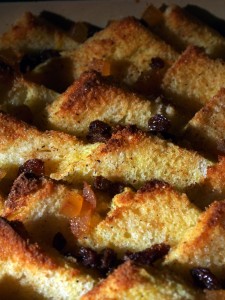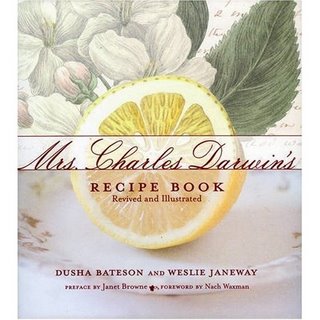
English food gets a bad rap in a lot of areas, but there’s one thing we’re world-class at: nursery puddings. A good bread and butter pudding is a joyous thing; a layer of spongey, custard-dense bread at the bottom, sweetness and flavour from a careful sprinkling of preserved fruit (I like juicy, tea-soaked sultanas and little cubes of stem ginger), and golden, caramelised points of crisp bread decorating the surface.
It’s unfortunate that so many of us were exposed to disastrous variations on the bread pudding theme when we were children. School dinners and rushed grandmothers are responsible for plenty of adult nightmares about gloppy flat puddings, studded with bits of wobbly egg, a nasty rubbery skin stretched over a sheer surface. There are a few things you need to do to ensure you avoid these problems when you’re making your own bread and butter pudding.
Firstly, and all-importantly, the bread shouldn’t be submerged in the custard. Don’t drown everything in custard, and construct your pudding so that points of buttered bread, moistened with the egg and milk and brushed with a little syrup and sugar, caramelise and crisp in the heat of the oven. And when you make that custard, beat the hell out of the egg. Nothing is more squick-inducing than a gelatinous chunk of eggwhite in the middle of your dessert plate.
For an entirely non-squicky pudding to serve between four and six, depending on greed, you’ll need:
8 slices good white bread, crusts left on
30g softened, salted butter, plus extra to grease the dish
30g caster sugar, plus one tablespoonful
3 large eggs
500ml milk
50g sultanas
50g stem ginger chunks – reserve the syrup
1 strong cup of your favourite tea
Nutmeg to grate over
Preheat the oven to 180°C (350°F). Make a very strong cup of hot tea without milk (make another for yourself) and soak the sultanas in it until you’ve finished buttering the bread and arranging it in the dish.
Cut the slices of bread into quarters diagonally, and butter them on both sides. This is an excellent way to use up stale bread – in fact, you’ll find the stiffer slices of slightly stale bread easier to handle than soft, fresh bread.
Arrange the buttered slices of bread fish-scale style in a buttered rectangular dish measuring about 20x30cm, the crust sides touching the base of the dish and the soft points pointing upwards. The bread triangles should be snug in the dish, but need a little space between them; overlapping three per row works well.
Drain the sultanas and chop the pieces of ginger into sultana-sized dice. Sprinkle them over and between the points of bread.
Beat the egg thoroughly with 30g of sugar in a jug. Use a whisk rather than a fork, to make sure the egg is properly beaten. Pour the milk over the egg and sugar and whisk it thoroughly to make sure everything is properly mixed.
Pour the custard (because that’s what it is now) carefully over the bread, being sure to moisten all of the points with the mixture. Brush the syrup from the ginger pieces over the exposed surfaces of the bread, and sprinkle with another tablespoon of sugar. Finish with a generous grating of nutmeg.
Bake, uncovered, for 35 minutes. The bread points should be golden brown and crisp – if you think they could do with a little more colour, leave in the oven for another 5 minutes before checking again. Serve hot or warm with plenty of cream. This pudding is best on the evening it’s made, when the top will be deliciously crisp.

